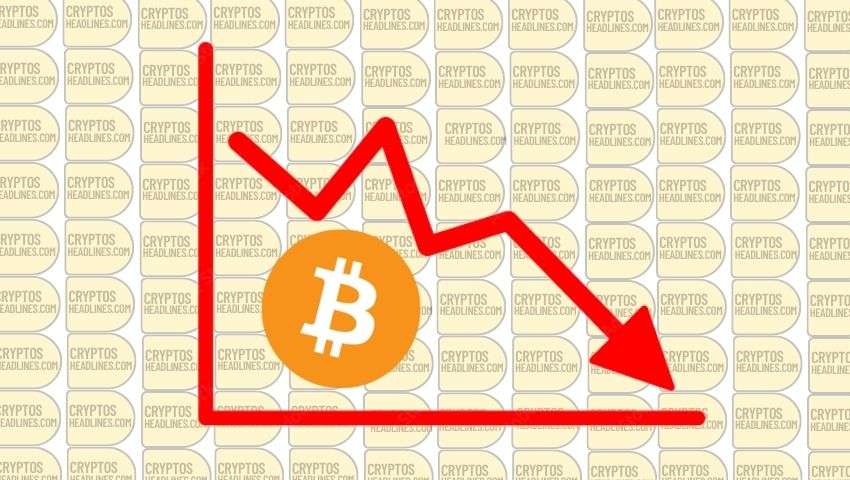If the current correlation between Bitcoin and specific macro charts is any indication, the price of Bitcoin could potentially drop to $15,000 in 2023.
The price of Bitcoin, represented by the ticker symbol BTC, has increased by almost 60% from $27,129 to around $27,000 in 2023. This surge was driven by expectations that the Federal Reserve would halt its quantitative tightening policy due to the banking crisis in the United States. However, despite these gains, the price of BTC has struggled to surpass the $30,000 mark decisively.
After reaching a significant psychological level, buying enthusiasm decreased, resulting in a price correction to around $25,000 in the past week. Interestingly, this decline has increased the correlation between Bitcoin and various traditional financial indicators.
However, does this raise the possibility of Bitcoin’s downward trend continuing in the second quarter? Let’s take a closer look.
U.S. dollar index’s double bottom
In the week ending May 14, the U.S. dollar index (DXY), which measures the strength of the dollar against other major currencies, increased by 1.4% to reach 102.70. This marked the dollar’s strongest week since September 2022.
What’s interesting is that the dollar’s rise created a potential pattern called a double bottom. This pattern occurs when there are two low points around the same price level, in this case, around 100.75. The double bottom pattern is considered a bullish signal, suggesting that DXY could potentially increase towards 105.85 in the coming months.

DXY weekly price chart. Source: cointelegraph
The weekly relative strength index (RSI) of DXY, which measures its strength, has rebounded after reaching 35. This rebound indicates a potential continuation of a bullish trend, which is typically seen as a negative sign for Bitcoin’s price.
The primary reason for concern is the growing negative correlation between Bitcoin and DXY on a weekly basis. As of May 14, the correlation coefficient stands at around -50.
The most recent U.S. consumer price index (CPI) report revealed that headline inflation decreased to 4.9% in April compared to the previous month’s 5%. However, core inflation, which excludes volatile factors, increased by 5.5%. This suggests that underlying price pressures are still present, which has temporarily reduced expectations of interest rate cuts by the Federal Reserve (Fed).
According to John Authers, a writer from Bloomberg, the probability of the Fed pausing its interest rate hikes next month has now become almost certain in futures and swaps markets. Prior to the release of the CPI numbers, there was an 84% chance of a rate hike pause.
If the Federal Reserve (Fed) decides to pause its interest rate hikes and keep rates stable, it is expected to bring stability to the bond market. Looking at historical patterns, when interest rates remain steady, it tends to benefit U.S. Treasuries but may not be favorable for stocks.
According to Erin Browne and Emmanuel Sharef from Pimco, if the Fed pauses its rate hikes at the highest point for at least six months and the United States experiences an economic downturn, historical data suggests that 10-year U.S. Treasuries may have flat returns over a 12-month period following the final rate hike. On the other hand, the S&P 500 (a stock market index) could potentially experience a significant decline in value.
If investor confidence declines, it would benefit the U.S. dollar but pose a risk to Bitcoin’s ability to surpass the $30,000 mark in the near future.

XAU/USD weekly price chart. Source: cointelegraph
In August 2020, when gold tested a certain level as resistance, it led to an 18% decrease in its price. If a similar pattern repeats in 2023, the price of gold could potentially decline towards its 50-week exponential moving average (50-week EMA), which is indicated by the red wave, and be around $1,850.
The weekly relative strength index (RSI) of gold, which is currently hovering around its overbought reading of 70, suggests a similar downside scenario. Since gold has a positive correlation with Bitcoin, this correction in gold’s price could potentially have an impact on Bitcoin as well in the second quarter.
M2 money supply declines
M2 is a measure that includes cash in circulation and funds in bank accounts and money-market accounts. During the Covid-19 pandemic, M2 experienced a significant increase of more than 40% due to the Federal Reserve’s quantitative easing measures. It reached its highest point of $21.84 trillion in January 2022.
However, in May 2023, M2 has decreased to $20.81 trillion, which is a decline of over 4% from its peak level.

U.S. M2 monthly supply chart. Source: cointelegraph
Whenever the M2 supply has experienced a decrease of 2% or more in the past, it has been associated with negative outcomes such as three depressions and one panic in the stock market.
This means that the significant decline in M2 could potentially indicate a possibility of Bitcoin reaching new lows, as Bitcoin tends to move in a similar direction as U.S. stock indexes.
At present, there is a strong correlation between Bitcoin and the Nasdaq-100 index on a weekly basis, with a coefficient of 0.92.
Bitcoin price “rising wedge”
It seems that Bitcoin is likely moving towards a price range of $15,000 to $20,000. This estimation depends on where it may break down from a pattern called a rising wedge.

BTC/USD weekly price chart. Source: cointelegraph
Technical analysts use a pattern called a rising wedge, which indicates a potential reversal of the price trend. It occurs when the price moves within a range that is defined by two upward-sloping trendlines. Eventually, the pattern is resolved when the price breaks below the lower trendline. This can lead to a significant price drop, potentially reaching a distance equal to the height of the wedge.
If the observed pattern in Bitcoin’s price is confirmed, considering the macro indicators mentioned earlier, it suggests that the price of Bitcoin could potentially drop to around $15,000 in 2023. This represents a decline of approximately 45% from its current price levels.











